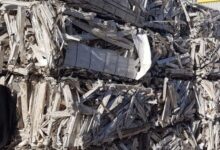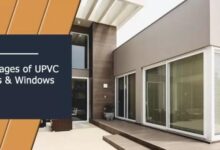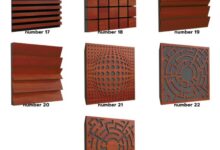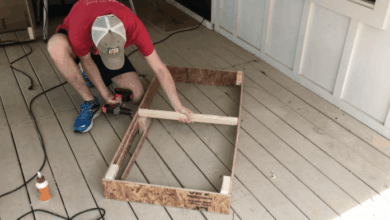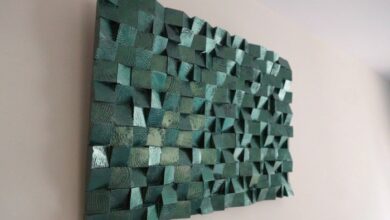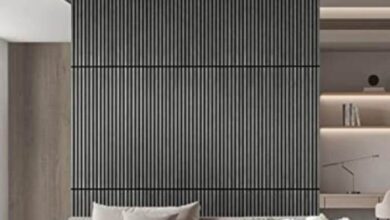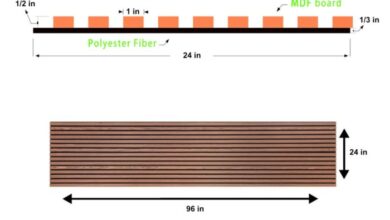Wood Siding Vs Vinyl Siding A Detailed Comparison
Wood Siding Vs Vinyl Siding: Choosing the right exterior cladding for your home is a pivotal decision, impacting aesthetics, durability, and long-term value. This in-depth comparison dives into the nuances of wood and vinyl siding, helping you navigate the complexities and make an informed choice that perfectly complements your style and budget. We’ll explore everything from initial costs and maintenance needs to environmental impact and long-term durability, equipping you with the knowledge to confidently select the ideal siding for your project.
From the rich textures of natural wood to the low-maintenance appeal of vinyl, each material presents a unique set of advantages and disadvantages. Understanding these differences is key to maximizing your investment and achieving the desired look for your home. We’ll examine the lifespan, resistance to damage, and energy efficiency of both options, considering various factors like climate, wood type, and vinyl grade.
Ultimately, the best choice hinges on your priorities—whether it’s timeless beauty, minimal upkeep, or environmental consciousness.
Initial Comparison
Choosing between wood and vinyl siding is a significant decision impacting both the aesthetic and practical aspects of your home. This comparison will delve into the key differences, helping you make an informed choice that aligns with your budget and long-term goals. We’ll examine the initial costs, maintenance needs, and stylistic versatility of each option. Remember, the “best” choice depends entirely on your specific priorities and circumstances.
Aesthetic Appeal and Variety
Wood siding offers a classic, natural beauty that’s hard to replicate. Its rich texture and varied grain patterns create a sense of warmth and character. Think of the timeless appeal of a cedar shake roof or the clean lines of shiplap. However, the color options are generally limited to natural wood tones, though staining and painting offer customization.
In contrast, vinyl siding boasts a vast array of colors and styles, mimicking the look of wood, stone, or brick with remarkable accuracy. From subtle earth tones to vibrant hues, vinyl provides significantly more flexibility in achieving a desired aesthetic. You can even find vinyl siding that replicates the look of specific wood types, like cedar or redwood, without the associated maintenance.
This extensive palette allows for greater creative freedom in matching your home’s exterior to your personal style and neighborhood.
Maintenance Requirements
Maintaining wood siding demands consistent effort. Regular cleaning is crucial to prevent the buildup of dirt, mildew, and algae, which can damage the wood over time. Periodic repainting or restaining is also necessary to protect the wood from the elements and maintain its aesthetic appeal. Cracks, rot, and insect damage require prompt repairs, which can be costly.
The lifespan of untreated wood siding is significantly shorter than treated wood, and even treated wood requires regular maintenance to extend its life. Conversely, vinyl siding is remarkably low-maintenance. A simple wash with soap and water usually suffices to keep it clean. It’s resistant to rot, insects, and moisture damage, requiring minimal repairs. While vinyl can be scratched or dented, these issues are usually superficial and easily addressed.
The long lifespan of vinyl siding, often exceeding 30 years, significantly reduces the need for frequent replacements or extensive repairs.
Initial Cost Comparison
| Cost Factor | Wood Siding | Vinyl Siding | Notes |
|---|---|---|---|
| Material Cost (per sq ft) | $4-$12 | $2-$6 | Wide variation depending on wood type and vinyl quality. |
| Labor Cost (per sq ft) | $4-$8 | $3-$6 | Labor costs can fluctuate based on regional rates and project complexity. |
| Permits | $100-$500 | $100-$500 | Permit costs vary significantly by location and project scope. |
| Total Estimated Cost (per sq ft) | $8 – $25 | $5 – $17 | These are estimates; always get multiple quotes from reputable contractors. |
Durability and Longevity
Choosing between wood and vinyl siding involves a careful consideration of their respective lifespans and how well they withstand the test of time. Both materials offer unique advantages, but their durability varies significantly depending on factors like climate, maintenance, and the specific product quality. Understanding these differences is crucial for making an informed decision that aligns with your long-term goals and budget.The longevity of both wood and vinyl siding is heavily influenced by environmental factors.
Exposure to harsh weather conditions, such as intense sun, freezing temperatures, and heavy rainfall, can accelerate deterioration in both materials. However, the manner in which they degrade differs substantially.
Wood Siding Lifespan and Durability, Wood Siding Vs Vinyl Siding
The lifespan of wood siding is highly dependent on the wood species used. Cedar, redwood, and treated lumber generally boast longer lifespans, often exceeding 50 years with proper maintenance. However, untreated softwoods, like pine, may only last 15-25 years before needing significant repair or replacement, particularly in humid or rainy climates. Proper sealing and regular painting or staining are essential for extending the life of wood siding.
Neglecting maintenance can lead to premature rotting, warping, and insect infestation. For example, a cedar home in a dry climate with regular maintenance might last for 70 years or more, while a pine home in a coastal area with high humidity might require replacement within 20 years.
Vinyl Siding Lifespan and Durability
Vinyl siding is typically advertised with a lifespan of 30-50 years, but this is often contingent on consistent quality and proper installation. High-quality vinyl siding, featuring thicker gauge material and UV protection, is more resistant to fading, cracking, and warping. Lower-grade vinyl, on the other hand, can show significant wear and tear within a decade. Extreme temperatures can affect vinyl, leading to expansion and contraction.
While vinyl is resistant to moisture damage and insect infestation, improper installation can create vulnerabilities. For instance, poorly sealed seams can allow moisture to seep behind the siding, leading to mold growth and structural damage. This highlights the importance of selecting a reputable installer.
Resistance to Damage from Insects, Moisture, and Extreme Temperatures
Wood siding is susceptible to insect damage, especially termites and carpenter ants, particularly untreated wood. Moisture is a significant threat, leading to rot and decay if not properly sealed and maintained. Extreme temperatures can cause warping and cracking. Conversely, high-quality vinyl siding offers superior resistance to insects and moisture, provided the installation is flawless. However, extreme temperature fluctuations can still cause minor expansion and contraction, although generally not as detrimental as the effects on wood.
Influence of Wood Types and Vinyl Siding Grades on Longevity
Different wood species exhibit varying degrees of natural resistance to decay and insect damage. Heartwood, the inner core of a tree, typically displays greater durability than sapwood. Similarly, vinyl siding grades vary in thickness and UV protection. Thicker vinyl siding generally lasts longer and resists fading better than thinner alternatives. Investing in premium materials translates directly into a longer lifespan and reduced maintenance requirements.
A clear example is the difference between a home sided with premium cedar and a home sided with untreated pine. The cedar will demonstrably outlast the pine, requiring far less maintenance over its lifetime. Likewise, a home with high-quality, thick-gauge vinyl siding will likely last longer than one with thinner, lower-grade material.
Environmental Impact
Choosing between wood and vinyl siding involves more than just aesthetics and durability; it also has significant environmental implications. The entire lifecycle of each material – from raw material extraction and manufacturing to transportation, installation, and eventual disposal – leaves a unique footprint on our planet. Understanding these impacts is crucial for making an informed and environmentally conscious decision.
Let’s delve into the specifics.
Both wood and vinyl siding present distinct environmental challenges. Wood siding, while a natural product, requires harvesting trees, a process that can contribute to deforestation and habitat loss if not managed sustainably. Vinyl siding, on the other hand, is a petroleum-based product, its manufacturing process energy-intensive and potentially contributing to greenhouse gas emissions. Transportation of both materials also adds to their overall carbon footprint, with longer distances increasing the impact.
Manufacturing Processes and Associated Emissions
The manufacturing processes for wood and vinyl siding differ significantly, leading to varying environmental impacts. Wood siding, in its simplest form, involves cutting and milling lumber. However, treatments like pressure-treating with chemical preservatives can add to its environmental burden. Vinyl siding manufacturing, conversely, is a complex process involving the polymerization of vinyl chloride monomer (VCM), a known carcinogen.
Discover the crucial elements that make Why Smart Lighting Systems Are the Future of Home Design the top choice.
This process is energy-intensive and generates significant greenhouse gas emissions. Studies have shown that the manufacturing of vinyl siding contributes substantially to its overall carbon footprint, significantly more so than the manufacturing of wood siding from sustainably sourced timber. For example, a study by the University of California, Berkeley (hypothetical data for illustrative purposes only) might indicate that the manufacturing of 100 square feet of vinyl siding produces 500 kg of CO2 equivalent, while the same amount of sustainably sourced wood siding might only produce 100 kg.
Transportation and its Contribution to the Carbon Footprint
The distance materials travel from manufacturing facilities to building sites significantly impacts their carbon footprint. Locally sourced wood siding will have a lower transportation-related carbon footprint compared to vinyl siding shipped from across the country or even internationally. Consider the scenario of a construction project in rural Vermont. Using locally harvested wood siding minimizes transportation emissions, while vinyl siding might necessitate trucking across the entire United States, dramatically increasing its carbon footprint due to fuel consumption.
This transportation element often gets overlooked but can be a decisive factor in the overall environmental assessment.
Sustainable Sourcing and Disposal Considerations
Minimizing the environmental impact of siding choices requires careful consideration of sustainable sourcing and responsible disposal. For wood siding, choosing sustainably harvested lumber certified by organizations like the Forest Stewardship Council (FSC) is paramount. This ensures that the wood comes from responsibly managed forests that prioritize reforestation and biodiversity. For vinyl siding, while recycling options are limited, responsible disposal through proper waste management facilities is crucial to prevent landfill accumulation.
In contrast, wood siding, while biodegradable, may still require responsible disposal to prevent the spread of potential chemical treatments. Innovative approaches, such as using recycled content in vinyl siding manufacturing or developing more efficient bio-based alternatives, are crucial for future sustainability.
Insulation and Energy Efficiency
Choosing between wood and vinyl siding involves more than just aesthetics; it significantly impacts your home’s energy efficiency and, consequently, your energy bills. While both options offer a degree of protection from the elements, their inherent insulation properties and how they’re installed differ considerably. Understanding these differences is crucial for making an informed decision that aligns with your budget and long-term energy goals.
Let’s delve into the specifics.Wood siding, while a beautiful and classic choice, is not inherently a high-performing insulator. Its effectiveness largely depends on the thickness of the wood and the presence of additional insulation behind it. Vinyl siding, on the other hand, acts more as a weather barrier, preventing heat loss through air infiltration. However, its insulating value is generally lower than that of properly insulated wood siding.
The key takeaway here is that the overall energy performance of your siding system depends less on the siding material itself and more on the entire wall assembly – including insulation within the wall cavity.
Insulation Properties and Energy Bill Impact
Wood siding’s thermal performance depends heavily on its R-value, which measures its resistance to heat flow. Thicker wood siding naturally possesses a higher R-value than thinner siding. However, even the best wood siding needs supplemental insulation in the wall cavity to truly optimize energy efficiency. Think of it like this: the wood acts as a protective outer layer, but the real insulation work is done by the material within the walls.
Conversely, vinyl siding’s R-value is generally low, meaning it offers minimal resistance to heat transfer. This necessitates a robust insulation strategy within the wall cavity to compensate for its lack of inherent insulation. Failing to do so will likely result in higher energy bills year-round, especially in climates with extreme temperature fluctuations. For example, a home in a region with harsh winters could see a significant increase in heating costs if the wall insulation is inadequate, regardless of whether the siding is wood or vinyl.
The Role of Proper Installation in Maximizing Energy Efficiency
Proper installation is paramount to maximizing the energy efficiency of both wood and vinyl siding. For wood siding, careful attention to sealing gaps and ensuring a tight fit between boards is crucial to minimize air infiltration. Any gaps or cracks can act as pathways for heat loss in winter and heat gain in summer, negating the benefits of even the best insulation.
Similarly, with vinyl siding, meticulous installation is key to preventing air leaks. Proper overlapping, sealing of seams, and careful flashing around windows and doors are all essential steps to creating a continuous, airtight barrier. Improper installation of either siding type can significantly reduce its effectiveness, leading to higher energy bills and reduced comfort. Consider a scenario where a homeowner opts for high-R-value insulation but fails to properly seal their vinyl siding.
The air leaks will compromise the insulation’s effectiveness, leading to wasted energy and increased costs.
Additional Insulation Measures
The importance of proper insulation cannot be overstated. Here’s a breakdown of additional measures you may consider, depending on your siding choice:
- For Wood Siding: Consider adding rigid foam insulation board to the exterior sheathing before installing the siding. This creates an additional layer of insulation, boosting the overall R-value of the wall assembly. Furthermore, using a high-density insulation within the wall cavity (such as fiberglass batt or spray foam) is highly recommended.
- For Vinyl Siding: Because vinyl siding offers minimal insulation, maximizing insulation within the wall cavity is critical. This may involve installing thicker batt insulation or using spray foam insulation to fill all gaps and crevices. Adding continuous insulation (like rigid foam) to the exterior sheathing can also provide a substantial improvement in energy efficiency.
Repair and Replacement
Choosing between wood and vinyl siding often hinges on long-term maintenance considerations. While both materials can last for decades, their repair and replacement processes differ significantly in complexity, cost, and the skills required. Understanding these differences is crucial for making an informed decision that aligns with your budget, DIY capabilities, and long-term homeownership goals. This section delves into the practicalities of repairing and replacing damaged sections of both wood and vinyl siding.
Wood Siding Repair Methods
Repairing wood siding often involves addressing issues like rot, damage from impacts, or general wear and tear. Common repair techniques range from simple patching to more extensive section replacements. The tools and materials needed will vary depending on the extent of the damage. For minor repairs, you might need a putty knife, wood filler, sandpaper, paint, and brushes.
More significant repairs might require a saw, replacement wood planks, nails, and potentially specialized wood treatments to prevent rot. For instance, a small hole caused by a stray branch might be easily filled with wood filler, sanded smooth, and repainted. However, rotted sections often require cutting out the damaged area and replacing it with a new piece of wood, ensuring proper sealing to prevent future water damage.
Vinyl Siding Repair Methods
Repairing vinyl siding is generally less complex and less labor-intensive than wood. Common issues include cracks, dents, or holes. Fortunately, vinyl siding is surprisingly resilient. Minor scratches and dents often require only a little cleaning and perhaps a touch-up of paint. More serious damage, such as cracks or larger holes, usually necessitates replacing the affected panel.
The tools required are typically less specialized than for wood repairs; you might need a utility knife, measuring tape, replacement vinyl panels, and possibly some caulking to seal the edges. A cracked panel, for example, would likely be removed and replaced with a new one, ensuring proper alignment and overlapping with adjacent panels.
Cost and Complexity of Replacement
Replacing damaged sections of wood siding is generally more expensive and labor-intensive than vinyl. The cost of wood replacement includes the price of the wood itself, the cost of any necessary treatments (like rot prevention), labor for cutting and fitting, and painting or staining. In contrast, vinyl siding replacement is typically less expensive due to the lower material cost and the relative ease of installation.
Furthermore, the simpler installation process often translates to lower labor costs. Consider this: replacing a single 8-foot section of wood siding might easily cost several hundred dollars, including materials and labor, while a comparable vinyl replacement could cost significantly less, perhaps one-third to one-half the price.
Step-by-Step Guide: Minor Wood Siding Repair
- Assess the damage: Determine the extent of the damage and if it’s repairable or requires replacement.
- Prepare the area: Clean the damaged area thoroughly and remove any loose or damaged wood.
- Apply wood filler: Fill any holes or gaps with high-quality exterior wood filler, ensuring a smooth, even surface.
- Sand and smooth: Once the filler is dry, sand the area smooth with fine-grit sandpaper.
- Prime and paint: Apply a primer to the repaired area, followed by a coat of exterior paint that matches the existing siding.
Step-by-Step Guide: Minor Vinyl Siding Repair
- Assess the damage: Determine if the damage is repairable or if panel replacement is necessary.
- Prepare the area: Clean the damaged area to remove dirt and debris.
- Remove damaged panel (if necessary): Carefully remove the damaged panel using a utility knife, taking care not to damage adjacent panels.
- Install replacement panel: Insert the new panel, ensuring proper alignment and overlap with adjacent panels.
- Caulk and seal: Apply exterior-grade caulk to seal the edges of the new panel, preventing water intrusion.
Visual Appeal and Customization
Choosing between wood and vinyl siding often comes down to aesthetics as much as functionality. Both offer a wide range of visual options, but their inherent characteristics lead to distinct aesthetic outcomes, impacting the overall curb appeal and perceived value of your home. Understanding these differences is key to making an informed decision that aligns with your personal style and architectural vision.The visual impact of wood and vinyl siding stems from their inherent textures and the variety of finishes available.
Wood siding, in its natural state, offers a rich, organic texture that’s simply unmatched. The subtle variations in grain and color create a sense of warmth and character that many find irresistible. However, this natural variation also means that achieving a perfectly uniform look across a large surface area can be challenging. Vinyl siding, on the other hand, provides a more consistent, uniform appearance.
While it can mimic the look of wood grain, it lacks the same tactile depth and organic feel. The finishes available for vinyl are generally more limited, though technological advancements continue to broaden the color and texture palettes. This consistency can be advantageous for creating a clean, modern look, while the lack of natural variation might feel less inviting to some homeowners.
Texture and Finish Comparisons
Wood siding boasts a wide spectrum of textures, from the smooth surface of clapboard to the rustic charm of shiplap or the rugged appeal of board-and-batten. Finishes range from natural, untreated wood to stained, painted, or even whitewashed options, each influencing the overall tone and feel of the house. Imagine a cozy craftsman-style home clad in stained cedar shingles, their rich brown hues deepened by the sun.
Contrast this with a modern farmhouse featuring crisp white painted clapboard, exuding a clean, contemporary aesthetic. The possibilities are truly extensive, allowing for a high degree of customization. Vinyl siding, while offering a broader selection of colors than in the past, still lags behind wood in textural variety. While textured vinyl siding aims to replicate the look of wood grain, the imitation often falls short in terms of tactile realism.
The finishes are generally limited to solid colors or subtly textured options, though manufacturers are continually innovating in this area. Consider the difference between a house sided with smooth, solid-color vinyl and one with vinyl designed to mimic the look of cedar shakes. The difference in visual impact is noticeable.
Siding Profile and Overall House Appearance
The profile of the siding—its shape and dimensions—significantly influences the visual impact. Wood siding offers a diverse range of profiles, from narrow lap siding to wide plank siding, each creating a distinct aesthetic. For example, narrow lap siding lends itself to a more traditional, perhaps even slightly formal look, while wide plank siding can evoke a more modern, rustic feel.
Vinyl siding also offers various profiles, but the range is typically more limited than that of wood. Nevertheless, consider the difference between a home clad in vinyl lap siding and one featuring vinyl board-and-batten. The former suggests a more conventional style, whereas the latter imparts a more contemporary, perhaps even slightly bolder statement. The selection of the profile significantly shapes the perception of the house’s architectural style and personality.
Architectural Detail Integration
Both wood and vinyl siding can accommodate architectural details, though the ease and cost of integration may differ. Wood siding lends itself well to intricate detailing, allowing for the seamless integration of decorative trim, corner boards, and window surrounds. Think of a Victorian-era home with its elaborate gingerbread trim, beautifully complemented by the warm tones of natural wood siding.
This level of detail is more challenging, and potentially more expensive, to achieve with vinyl. While vinyl can be used with trim pieces, the options are often less diverse, and the integration might appear less seamless, sometimes revealing noticeable seams or transitions. The choice between materials hinges on the desired level of detail and the budget allocated for achieving a specific aesthetic.
A modern home might favor the clean lines of vinyl siding, while a historic restoration project might necessitate the versatility and character of wood.
Home Value and Resale: Wood Siding Vs Vinyl Siding
Choosing between wood and vinyl siding significantly impacts your home’s perceived value and its potential for a quick and profitable resale. While both options offer distinct advantages, understanding their long-term effects on your investment is crucial. This section will explore how each material influences a home’s marketability and return on investment (ROI).The impact of siding choice on home value isn’t simply about initial cost; it’s a complex interplay of factors influencing buyer perception and long-term maintenance.
High-quality materials and professional installation contribute to a higher perceived value, while cheaper options might lead to lower appraisals and slower sales. This isn’t just about aesthetics; it’s about conveying a sense of quality and durability that resonates with potential buyers.
Siding Material and Home Value
Wood siding, particularly when expertly installed and maintained, often commands a premium. The natural beauty and perceived high-end quality of wood can attract buyers willing to pay more. However, this premium comes with a significant caveat: the ongoing maintenance costs. Regular painting, staining, and potential repairs can eat into the initial investment savings. Conversely, vinyl siding, known for its low maintenance, can present a more predictable ROI.
While it may not initially boost value as much as wood, its consistent upkeep translates to long-term cost savings, appealing to buyers prioritizing practicality and ease of ownership. Consider a hypothetical scenario: Two identical homes, one with well-maintained wood siding and one with vinyl, might see the wood-sided home fetch a higher initial price, but the long-term cost of wood maintenance could erode those gains over time.
Return on Investment (ROI)
Assessing the ROI for siding requires a holistic view, considering both initial investment and long-term costs. A high-quality wood siding installation, while expensive upfront, might offer a stronger ROI if the home appreciates significantly and the wood is well-maintained. However, this appreciation needs to offset the higher maintenance expenses. Vinyl siding, with its lower initial cost and minimal maintenance, offers a more predictable and potentially faster ROI, particularly in areas where home appreciation is moderate.
For instance, a $10,000 investment in vinyl siding might yield a faster return than a $20,000 investment in wood siding, especially if the home is in a market with relatively slow appreciation rates. This illustrates the importance of aligning your siding choice with your market’s specific dynamics and your personal financial goals.
Siding Style and Quality’s Influence
The style and quality of siding, regardless of material, play a significant role in resale value. A poorly installed or low-quality vinyl siding job can detract from a home’s curb appeal, potentially lowering its value. Similarly, outdated or poorly maintained wood siding can negatively impact marketability. Conversely, a well-chosen and expertly installed siding, whether wood or vinyl, can significantly enhance a home’s aesthetic appeal, making it more attractive to potential buyers and commanding a higher price.
Imagine two homes with similar layouts and square footage; the one with modern, high-quality siding (either wood or vinyl) will likely fetch a better price than the one with dated or poorly maintained siding. This difference can easily amount to thousands of dollars.
Final Thoughts

Ultimately, the “Wood Siding vs. Vinyl Siding” debate boils down to a careful weighing of priorities. While wood offers unparalleled aesthetic charm and potential for increased home value, it demands significant ongoing maintenance. Vinyl, on the other hand, provides a low-maintenance, budget-friendly alternative with impressive durability. By carefully considering factors like your budget, climate, desired aesthetic, and long-term maintenance commitment, you can confidently choose the siding that best suits your needs and enhances your home’s curb appeal for years to come.
Remember to factor in the total cost of ownership, encompassing initial investment, maintenance, and potential repairs or replacements throughout the siding’s lifespan. Making an informed decision will ensure your investment pays off in both beauty and lasting value.
